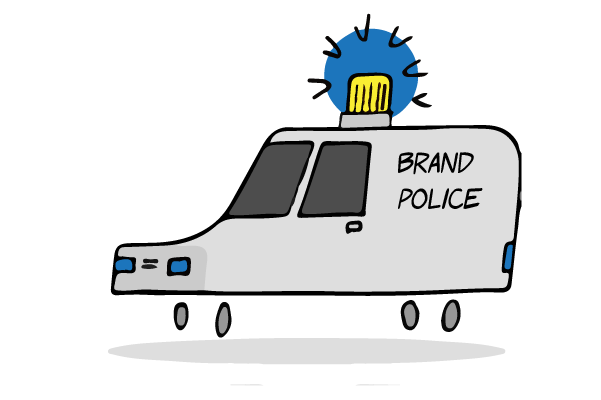 Copyright Brandlove Customer Experience (Pty) Ltd.
Copyright Brandlove Customer Experience (Pty) Ltd.
Once upon a time there was a picture perfect authentic brand…
As customer experience professionals, we are always on the lookout for brand warriors – people who are really customer centric, passionate about service and someone that makes a brand come alive through their actions. So, when we recently found someone like this who works for a big corporate, we did an informal video interview to capture some of the spark to inspire others. Unfortunately, we were stopped by the corporate’s marketing department who wanted to edit the content and script the person – in my mind rendering the passion and spark to a scripted version would look good, but the authenticity would be lost. That got me thinking…
As a Marketer myself it was imprinted on us to ensure that the brand was protected at all costs. Brand bibles were created to ensure that the logo, fonts and colours were always used correctly. Marketers were (and still are) called the brand police making sure that everyone keeps to the rules and never deviate. ALL communication, design or campaigns needs the go ahead from marketing. In most cases there are no creative license, on the spot design thinking or authority to act in the moment without the blessing of the marketing department.
I was also once convinced that the brand I was working for needed protection and we had to control this brand. I agree that the unified look and feel is important but, I want to challenge this thinking and ask – what would happen if instead of controlling the brand so much, we would let go a little?
Surrender control
One of the most powerful advertising campaigns I ever saw was the Volvo super bowl interception campaign.
Volvo didn’t buy advertising space, but rather created an interception campaign where every time another car company like BMW or Audi for instance ran an advertisement during the super bowl, people could go onto social media and enter a Volvo competition. Every time they saw a car advert (ANY car advert) during the super bowl people had to tweet #volvocontest and the name and reason you nominate someone to stand a chance to win a Volvo.
As a marketer I can imagine how most discussions potentially went in the boardroom when the advertising company pitched this ‘way out’ idea. The default reaction would probably have been heart palpitations, because of the fear of losing brand control. Comments like, ‘but there will be brand confusion’, ‘this will not work’, ‘we have no control’, ‘people will not understand this concept’ would have been uttered. Rather than having the correct well designed Volvo logo imprinted on peoples minds through ’normal advertising’, Volvo started a conversation. They created an opportunity for people to tell others their story. They handed brand control over to their customers and potential customers. And it worked!
Another great example of letting go of total brand control is KLM’s happy to help campaign
KLM spent 6 months following ALL travel related issues to get an idea of the main themes and then set-up a control centre to intercept and react/act on issues that travellers had at the airport – even if it was not people flying KLM. They helped people flying other airlines to demonstrate their KLM service focus.
Again, as a marketer the first reaction to the pitch in the boardroom could have been: ‘what if people confuse our good service and think it is their airline?’ or ‘why spend money on people that are not our customers’. By surrendering control of their strict brand rules KLM created happy endings to people’s stories – the most powerful way to imprint feelings and emotions and brand loyalty in my mind.
The power of storytelling
Story telling has been part and partial of the human race for centuries. Stories actually activates more parts of the brain than if we were for instance listening to a PowerPoint presentation with bullet points. When we listen to a presentation the information hits the language processing parts of the brain where we decode words into meaning, but that is about where it ends. Scientists call these parts of the brain the Broca’s and Wernicke’s area.
But, when we are being told a story, things change drastically. The language processing parts in our brain are still activated, but additional areas of the brain that we would use when experiencing the events of the story are too. We want to relate it to one of our existing experiences. While we are busy searching for a similar experience in our brains, we activate a part called insula, which helps us relate to that same experience. Thus making stories that we connect with so much more personal.
In the end, when customers and employees talk about your brand in a positive way, if they tell their friends and family about their stories of great experiences and how they felt when interacting with a brand it creates a real brand, a living brand, a personal brand and an authentic brand. Does controlling your brand really create authentic experiences or does it limit it? What stories do you create for your customers and employees to tell and connect with? The answer to the above questions will determine if you have a picture perfect brand or an authentic brand!
The end.
Ps: if you ever come across a brand warrior who goes the extra mile, nominate them as a brand warrior on [email protected] and let’s start spreading authentic stories around customer and employee experiences!



![[Research Round-Up] New Study Shows the Continuing Value of B2B Thought Leadership](https://customerthink.com/wp-content/uploads/development-2010010_1280-pixabay-innovation-ideas-think-1-218x150.jpg)